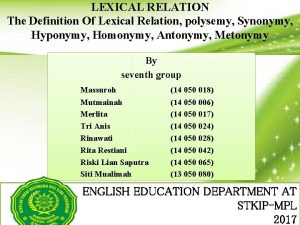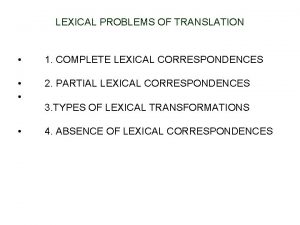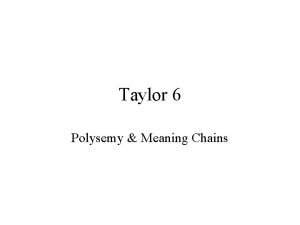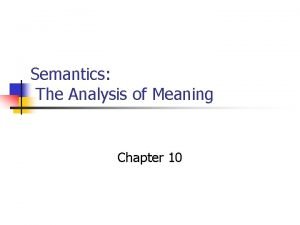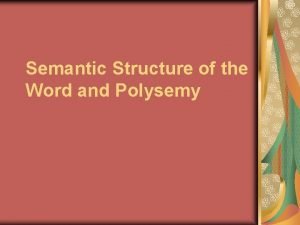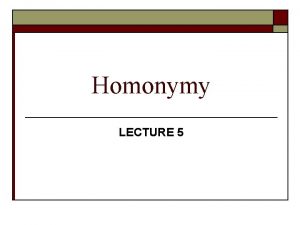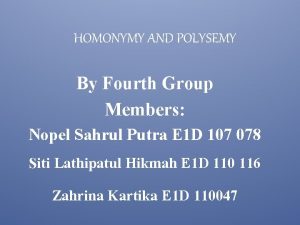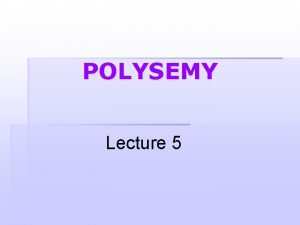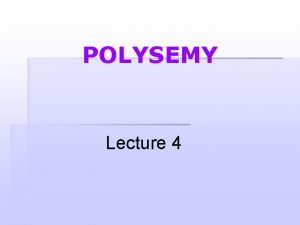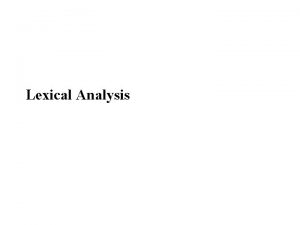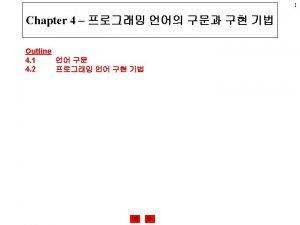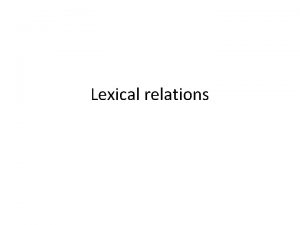LEXICAL RELATION The Definition Of Lexical Relation polysemy








- Slides: 8

LEXICAL RELATION The Definition Of Lexical Relation, polysemy, Synonymy, Hyponymy, Homonymy, Antonymy, Metonymy By seventh group Massuroh Mutmainah Merlita Tri Anis Rinawati Rita Restiani Riski Lian Saputra Siti Mualimah (14 050 018) (14 050 006) (14 050 017) (14 050 024) (14 050 028) (14 050 042) (14 050 065) (13 050 080) ENGLISH EDUCATION DEPARTMENT AT STKIP-MPL 2017

Definition of lexical relation • A lexical relation is a culturally recognized pattern of association that exists between lexical units in a language. • There are different types of lexical relationspolysemy, synonymy, hyponymy, homonymy, antonymy and metonymy

Polysemy • Polysemy is a word has more than one meaning which related in the concept. When a word has several very closely related senses or meanings. • Example: music, rot, guard.

Synonymy is used to mean sameness of meaning. Synonym is a word, which has the same or nearly the same meaning as another word For examples are broad = wide, conceal = hide, and answer = reply

Hyponymy • • • Hyponymy is a relationship between two words in which the meaning of one of the words includes the meaning of the other word. Example: blue green yellow Black color white red

Homonymy is ambiguous words whose different senses are far apart from each other and not obviously related to each other in any way. Homograph is a word which is spelled the same as another word and might be pronounced the same or differently but which has a different meanings. Ex: tear, bear. Homophony is the case where two words are pronounced the same but they have different written forms Homophony ex: led, lead/ would, wood.

Antonymy. • Antonymy or oppositeness of meaning has long been recognized as one of the most important semantic relations. e. g. quick-slow, big-small, etc. Types of antonyms: • • Gradable antonyms/pairs Nongradable antonyms/complementaries Reversives Conversepairs

Metonymy • A metonym is a word used in place of another word or expression to convey the same meaning. Example: The use of ‘crown’ for ‘king’
